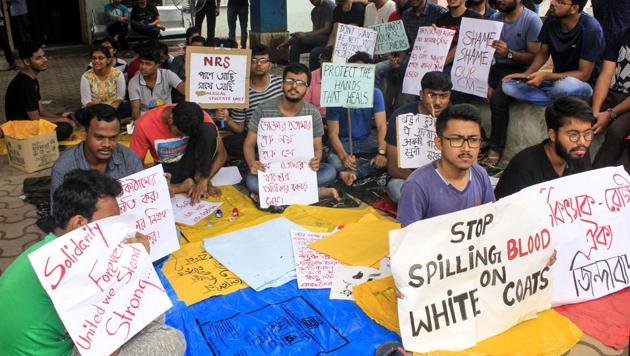Protect the poor against medical negligence
Violence is wrong, but the system is more geared to protect medical practitioners than patients. Overhaul it
The government is toying with the idea of a 10-year jail term, and a fine of ₹5 lakh, for persons found guilty of physically or mentally abusing doctors, whether inside a clinic, or in close proximity of the clinic, or on home visits. The government and the Indian Medical Association (IMA), responsible for the draft act, are advocating a central law specifically addressing the issue of violence against doctors to send out a strong message to the public. But what exactly is the message?

In a recent interview to the Hindustan Times, Harsh Vardhan, the Union health minister, condemned the violence at NRS hospital in Kolkata which sparked off a nationwide doctors’ strike in June. He said that a 10-member committee had been constituted, representing diverse stakeholders, to look into the issue of the spurt in violent outbreaks in hospitals. In a meeting, the involved ministries agreed on the need for a central legislation, leading to renewed discussions on a draft act submitted by the IMA in 2017. This has now been shared with the states for their response.
The proposed Protection of Medical Service Persons and Medical Service Institutions Act, 2017, recommends a 10-year imprisonment term and a penalty of ₹5 lakhs for physically assaulting doctors and healthcare professionals. It also wants to categorise such violence as an offence that is cognisable, non-bailable, non-compoundable, and fit for trial by a court of the Judicial Magistrate of First Class. It has provisions which address damage to property, and make an offender pay twice the price of the damaged property as compensation.
While it is imperative to provide a safe professional environment for doctors to work, and violence in no form can be condoned, the implications of this draft are troubling. The provisions seem especially harsh given that medical negligence, even when resulting in death, carries a jail term of only two years, with or without a fine. A recent Harvard University study, according to news reports, has claimed that up to 5 million people in India suffer due to medical negligence annually. If this is true, and the processes currently in place for redressal squarely put the burden of proof on the complainant, it becomes clear that the system is far more geared to protect practitioners than patients. Patient families have to fight long and difficult battles in order to receive any compensation for medical oversight, most of which involve private hospitals and the privileged classess it caters to.
For the poor, who are mostly dependent on public healthcare, navigating through the system is an even more arduous challenge. In cases of malpractice, their only recourse is to quietly accept their fate, which is what the draft act of the IMA will end up institutionalising. An eye for eye is unacceptable, but one also has to abandon quick-fix, knee-jerk reactions to resolve the problem of violence against doctors. The need of the hour is a systemic change. The abysmal condition of primary healthcare, both in terms of infrastructure and personnel, requires urgent attention. Rather than providing security at public hospitals, addressing the problem of staff shortage, for instance, could go a long way in assuaging public grievance. This is, of course, a far tougher battle for the IMA to fight. Instead, it chooses to see it as a law and order issue. The Indian Penal Code (IPC) has plenty of laws which deal with violence. A stringent new law, specifically to protect doctors, as recommended by the IMA, will primarily victimise those who are already battling the structural violence unleashed on them by the State.
Media accounts of the death of Mohammad Sayeed, the 75-year-old who died in Kolkata’s NRS Hospital, quote family members saying that there was a 40-minute delay in administering a lifesaving injection. Frustrated that no one was paying heed to their repeated requests, one of them pulled a doctor by his hand and asked him to attend to the ailing patient, for which they even later tendered an apology. The relatives allege that the doctors attacked them with hockey sticks and bamboo poles, while the police looked on, when they asked for the body to be released. The family lodged FIRs against three NRS doctors. While justice for doctors is being pursued with great gusto, the claims of medical negligence and assault by doctors got no traction.
The key question is what recourse do the poor of this country have in cases when doctors do not prioritise patient needs? If indeed there was negligence in Sayeed’s case, who bears responsibility for it? It is time to think not merely of doctors, but also patients.



